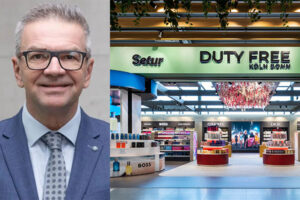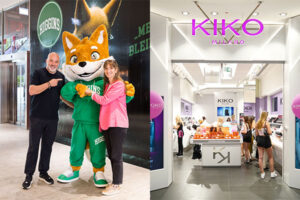By Gastón Gaitán
We are ruled by our emotions. They dictate the ups and downs of our daily lives and determine the wellbeing of our communities; they can construct or even destroy civilizations, changing the course of human history. After all, wasn’t it our rage that brought about the storming of the Bastille, our curiosity that landed us on the moon, and our compassion that eradicated polio?
Emotion is not a stranger to any of us: It is what we feel when loved ones catch our eyes, when we smell freshly mown grass, or when we feel the heat of the sun on our skin? It is familiar to all of us. It is the physical manifestation of an emotional bond, and it is a powerful trigger. It sends messages to our brains, urging us to make decisions, inciting us to action.
Behind every emotional bond is the memory of a feeling: joy, sadness, anger, fear.
Take joy, for example: When a friend makes us laugh, we associate the joy that we feel with that friend as well as with the surroundings. Whether we are setting up camp on the shores of a mountain lake or filling up the tank at a gas station on the outskirts of town, our brains generate positive memories, which, when triggered, encourage us to return to the lake and, yes, even to the gas station, again and again.
This also holds true when we decide where to shop. Online? Offline? At this shopping center or at that one? Whether we are aware of it or not, as consumers, we always factor emotional bonds into our decisions. However, laughter, love, and human warmth are not the only things that create these bonds: Leisure does, too. If a shopping center offers leisure options and sensations that cater to all tastes, consumers from all age groups and sectors of society feel the glow of emotion that so often results from shared moments with friends or family. Moreover, they will return for more.
CONSUMERS ARE MUSIC
Pop songs, arias, lullabies – no two musical compositions sound the same. Likewise, consumer behavioral patterns and preferences are unique. Burdened by responsibilities and bolstered by dreams, all consumers sing very different tunes.
Moreover, they don’t conform to any old product, even if it is delivered promptly. What they hanker for is a special kind of added value, a deeply personal experience that makes them feel that the product is made exclusively for them.
We analyze consumer behavioral patterns as well as leisure preferences and plot them on graphs, where they can be interpreted like notes on sheet music, transformed into symphonies. Just as different melodies are composed for all the instruments of an orchestra, and played together in harmony, our market research is used to tailor a myriad of leisure options and sensations to suit all consumer profiles. The result – a chorus of positive emotions that generate memories that hook consumers.
As the old, capitalist-era adage “the consumer is always right” essentially means that we should listen to consumers, adapt to their needs, and find solutions, in this new technological age, it is undoubtedly more relevant than ever.
LEISURE, BEFORE AND AFTER
Whether curling up on the sofa with a good book or skydiving: Even though everyone has his or her own idea of what constitutes leisure, the consensus is that it is linked to a feel-good factor. The concept of leisure at shopping centers has evolved over time. Traditionally, consumer demand for leisure was met via cinemas, bowling alleys, or spectacular architecture. For us, leisure is an applied concept that goes far beyond such ideas. We extract positive emotions from everyday life and transfer them to commercial areas, creating a Leisure Ecosystem where those emotions come alive, guiding users on their customer journeys.
In 2018, new technologies shook up the shopping center sector. A new era of commerce has begun in which consumers purchase goods both online and offline. Though online shopping competes with shopping centers, new technologies offer advantages, too. They are useful and precise tools for gathering consumer data. Furthermore, shopping center closures are not caused by the advent of online shopping alternatives, but by competition from other shopping centers with the know-how to attract more visitors. If modern consumers prefer options that generate pleasant memories and emotional bonds, it’s hardly surprising that leisure is gaining ground in this sector.
LEISURE AS A STRATEGY
We consider leisure as part of a strategy to surpass all expectations, by incorporating elements of local culture with human and social factors and offering sensations that leave consumers hooked. In order to do so, we carry out thorough market research and develop ideas through to the technical design and construction of so-called “leisure ecosystems” – living, breathing, interconnected spaces with fully-integrated leisure options, made by and for people.
Currently, shopping centers are making great efforts to reinvent themselves and connect with people by creating emotional bonds. What better marketing strategy is there than making people feel good, and leisure is a bridge to achieving this goal.






